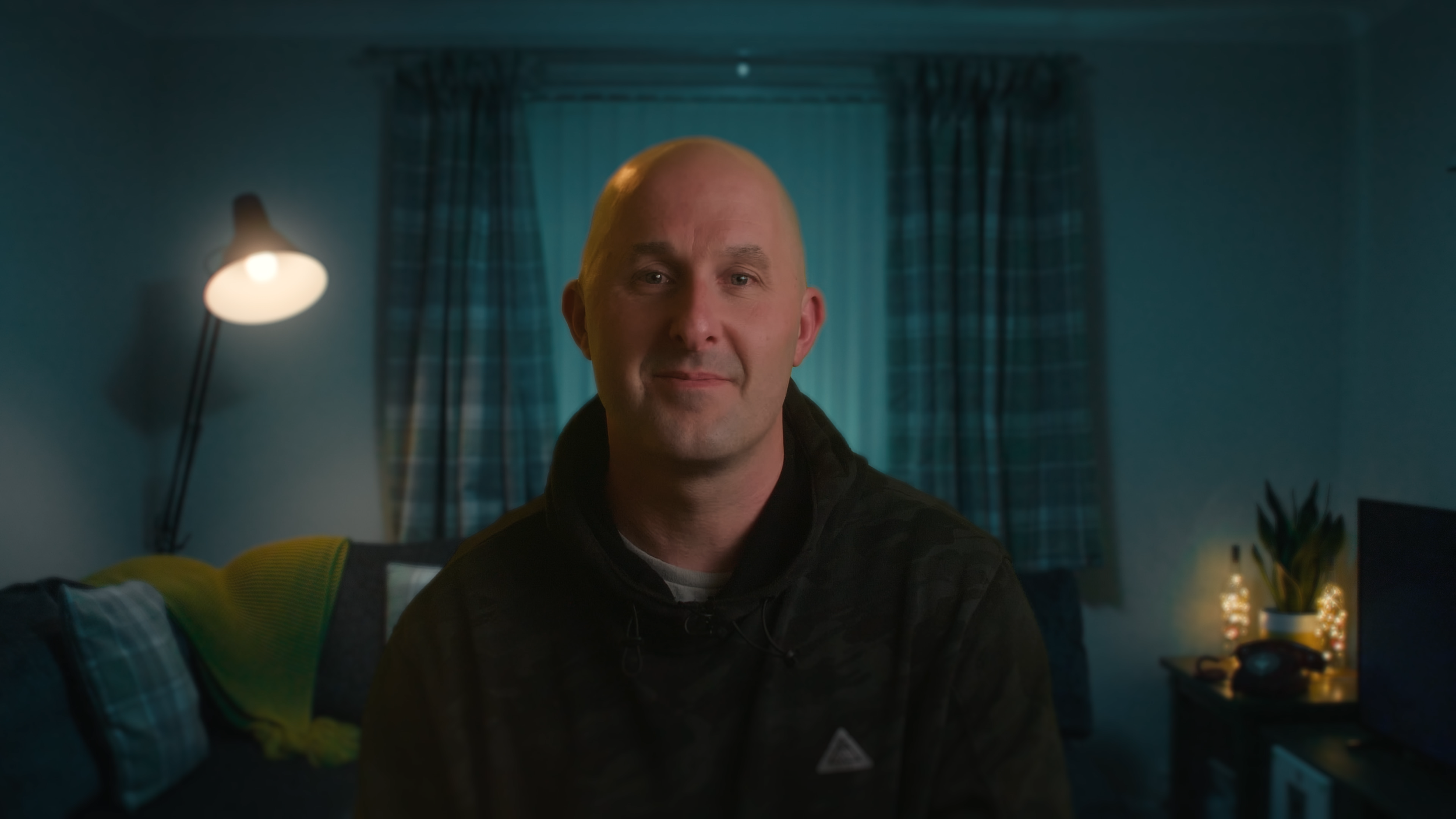Businesses can benefit if they make efforts to engage their audience effectively to stand out. One creative approach to achieve this is to apply the principles of video production to business strategy. There is far more synergy between the concepts of video and those that exist in business. Just like a well-crafted film captivates its audience, a thoughtfully developed business can resonate with its target market. Let’s explore how concepts such as story, lighting, audio, composition, lens choice, and movement can be translated into the business realm to create a powerful impact.
1. Story: Crafting Your Business Narrative
Every memorable film begins with a compelling story. The plot draws viewers in, keeps them engaged, and leaves a lasting impression. Similarly, your business needs a strong narrative to connect with your audience. Consider who your story is for: who is your target demographic, and what are their interests and pain points? A great story is not just technically well-written; it must resonate with the right audience.
Example: Consider a local café that wants to stand out in a neighbourhood filled with coffee shops. Instead of simply promoting their coffee quality, they craft a story about being the heart of the community, a place where locals meet, work, and relax. They share stories of local artists showcasing their work on the café’s walls, or how they source their ingredients from nearby farmers. This narrative not only differentiates them from competitors but also builds an emotional connection with their customers, making the café a part of their daily life.
In business, this means knowing your customers and shaping your message to speak directly to them. Are you addressing their needs? Are you engaging them with a narrative that they find meaningful? Just as a film can start strong but lose its way, a business needs to maintain focus and clarity to keep its audience engaged from start to finish.
My Approach:
In my business, my story is irrelevant. While I can draw comparisons and empathise with the struggles businesses face because I face these too, my story doesn’t matter. While focusing on a niche is great, each person who owns a business within the niche has their own story. My job is to come to you with open ears, allowing you to communicate your story to me so I can help guide you on how to tell your story to others.
Remember, your story is the backstory. It is the start and the foundation, but it is not a solution to your problems. However, knowing the story, the history, and the heart of your beginning should be the starting point for great communication.
2. Lighting: Showcasing Your Business in the Best Light
In filmmaking, lighting is crucial to capturing the right mood and tone. It highlights the subject and sets the visual atmosphere. In business, you want to present your company in the best possible light. This means ensuring your brand image is consistent and appealing to your target audience.
Appearance
Consider how your business appears to first-time customers. Is your branding polished and professional, or does it leave an unflattering impression?
Just like lighting should match the story, your brand’s presentation should align with your message and values.
Evaluate how your business is perceived and make adjustments to ensure that you’re shining brightly in your market.
My Approach:
The way I like to present myself to the world is by showing that I am accessible. There is no pretense or status that I know more about video than you. I consider myself very relaxed, empathetic, humble, and pragmatic. I love to learn, listen, and strategise. I present myself to the world with these qualities in mind, hoping that my audience receives me in the same way.
My aim is simple: to help businesses utilise video to get closer to their goals. I do not show my videos in a flashy office or a stunning location. My aim is to show businesses that this can be done at home, and I do this by leading by example.
3. Audio: Tuning into the Right Message
Audio in film ensures that the story is communicated clearly and effectively. Bad sound quality can quickly turn an audience off, even if the visuals are stunning. The same goes for your business message. Is your communication clear, or is it lost in a sea of noise?
Example: A tech startup launching a new app might have groundbreaking features, but if the explanation is filled with technical jargon and complex diagrams, it could lose potential customers. Instead, they should focus on clear, simple language, perhaps through engaging video tutorials that demonstrate the app’s benefits in everyday terms. This ensures that even non-tech-savvy users understand and appreciate the product, enhancing adoption and word-of-mouth promotion.
Make sure that what you’re saying is what your audience wants to hear. This requires understanding your customers’ needs and crafting messages that are relevant and valuable to them. Avoid jargon and convoluted language that can confuse or alienate your audience. Instead, focus on delivering clear, concise, and compelling messages that resonate and build trust with your customers.
My Approach:
How I present myself to the public demonstrates my ability to listen, to be methodical, and to speak at an even pace. I want to demonstrate to businesses that I take the time to understand the subject matter, to offer value, and to show that I have insight that extends far beyond simply holding a camera.
This is why when I create a video, they are direct-to-camera and normally at my home. They are not fast-paced but allow you to digest information easily. This does not mean your video has to be this way; your style is determined by multiple factors. Mine is simple: to demonstrate my ability to communicate value.
4. Composition: Framing Your Business for Success
Composition in film is all about how elements are arranged within the frame to create a pleasing and coherent image. In business, this translates to how you structure your offerings and customer experiences. Are you positioning your business effectively in the market?
Journey
Consider the customer journey: what is their experience before, during, and after interacting with your business?
Are you aligning your products and services with your customers’ expectations and desires?
By carefully composing your business offerings and interactions, you create a harmonious experience that attracts and retains customers.
My Approach:
I want to frame my business so the customer doesn’t think of me as just the video guy. I want the customer to feel that I am more of a business consultant who understands their issues and how to communicate this. The output is video, but everything before this is consultancy. I spend time talking about the customer, the problems they face, why now, and why not next year. All these intricacies form a puzzle, and these puzzle pieces form a picture. I want clarity for my customers.
My website is not framed around the gear; it is set up for discussion and to talk about the business issues you are facing.
5. Lens Choice: Focusing on the Right Audience
Filmmakers use different lenses to capture scenes in various ways, either focusing on a broad landscape or honing in on specific details. In business, lens choice is akin to market focus. Are you casting a wide net, or are you zeroing in on a specific niche?
Example: A fitness brand might choose to target a specific audience, such as new mums looking to regain fitness postpartum. By focusing their marketing efforts and product offerings on this niche, through specialised workout programmes and supportive community forums, they build a loyal customer base that feels understood and valued. This targeted approach often results in stronger brand loyalty and more effective word-of-mouth marketing.
Understanding whether your business should target the masses or a specific audience is crucial. A wide-angle approach might reach more people, but it risks diluting your message. Conversely, a focused approach allows for a tailored message that resonates deeply with a select audience. Choose your lens wisely to ensure you’re reaching the right people with the right message.
My Approach:
I have slowly learned that while businesses operate in a niche or target market, what they offer is just the icing on the cake. Underneath the icing are the same challenges that all businesses face: client acquisition, hiring staff, training staff, and trying to increase revenue. All businesses face the same issues once we get past the niche of the business.
This is why we don’t target a specific niche, as we understand that the top layer always leads to the deeper problems that businesses have. We focus on the problem, first taking a holistic approach—a wide-angle, so to speak, and then, through investigation, we focus deeper on the areas of concern.
6. Movement: Navigating Your Industry’s Landscape
Movement in film is used to convey action, emotion, and pace. It’s a tool that can create tension, excitement, or calmness, depending on how it’s used. Similarly, how your business moves within its industry can speak volumes about its character and strategy.
Connected
Are you moving too fast for your audience to keep up, or are you progressing at a pace that feels comfortable and engaging?
Assess how your business reacts to changes in the market and how it communicates its evolution to customers.
Movement should be intentional and reflective of your business’s goals and values, ensuring that your audience stays connected and involved.
My Approach:
Our movement is relaxed, intentional, and direct. We know that with investment comes risk, and businesses are doing everything they can to be risk-averse and provide stability. The way we move within the industry is by providing confidence and assurance that we can help businesses get steps closer to their goals. This means we are not erratic; we have procedures in place and an onboarding process that inspires confidence. We spend a lot of time looking at the business model to ensure we appear to be a great investment.
Conclusion:
By applying filmmaking principles to your business strategy, you can create a more engaging and resonant experience for your audience. Just like a great film captivates and leaves a lasting impression, a well-executed business strategy can build strong connections and drive success. So, next time you plan your business approach, think like a filmmaker and let your creativity shine.
This article explores the parallels between video production and business strategy, helping to frame business concepts in a way that is both creative and strategic. Let me know if there are any additional adjustments or sections you would like to include!
ABOUT ME
My name is Byron Phillips and I run Datrysiad Media.
Datrysiad Media is a video production company based in Cardiff. We help businesses with their pain problems and communicate their stories.
We are a full-service video production that can handle every aspect of the video production process. Creating high-quality video content that meets your needs and exceeds your expectations.













